Enzymes(酶)
Enzymes are very efficient and specific catalyst proteins which react with 1 or few types of substrates in biochemical reactions and are responsible for bringing about almost all of the chemical reactions in living organisms. Enzymes speed up reactions by providing an alternative reaction pathway of lower activation energy. Without enzymes, reactions take place at a rate far too slow for the pace of metabolism which means that they speed up the chemical reactions in living things.
There are 2 types of enzymes, ones that help join specific molecules together to form new molecules & others that help break specific molecules apart into separate molecules. Enzymes play many important roles ouside the cell as well. One of the best examples of this is the digestive system. For instance, it is enzymes in your digestive system that break food down in your digestive system break food down into small molecules that can be absorbed by the body. Some enzymes in your digestive system break down starch, some proteins and others break down fats. The enzymes used to digest our food are extra-cellular since they are located outside our cells & enzymes inside our cells are intra-cellular enzymes. Enzymes are used in ALL chemical reactions in living things; this includes respiration, photosynthesis, movement growth, getting rid of toxic chemicals in the liver and so on. Enzymes are proteins that must have the correct structure to be active. They are very easily affected by heat, pH and heavy metal ions.
Ribonucleoprotein enzyme catalytic activity is located in the protein part but for some the catalytic activity is in the RNA part. A catalyst is any substance which makes a chemical reaction go faster, without itself being changed. A catalyst can be used over and over again in a chemical reaction and does not get used up.
Enzymes lower the amount of activation energy needed by binding to the reactants of the reaction they catalyze, thus speed up the reaction and can process millions of molecules per second. Enzymes are typically large proteins with high molecular weight that permit reactions to go at conditions that the body can tolerate.
Enzyme nomenclature is based on what the enzyme reacts with & how it reacts along with the ending ase.
Enzymes must get over the activation energy hurdle.
Enzymes change how a reaction will proceed which reduces the activation energy and makes it faster. The more we increase the enzyme concentration the faster the reaction rate for non-catalyzed reactions. Enzymes that are catalyzed reactions also increase reaction rate at higher level of concentration but up to a certain point called Vmax which means that the enzyme has reached its maximum point. The reaction is limited by both the concentrations of the enzyme and substrate. Enzymes as catalysts take part in reactions which provide an alternative reaction pathway. Enzymes do not undergo permanent changes and remain unchanged at the end of the reaction. They only change the rate of reaction, not the position of the equilibrium.Enzymes as catalysts are highly selective by only catalysing specific reactions due to the shapes of the enzyme’s molecule.
Enzymes contain a globular protein part called apoenzyme and a non-protein part named cofactor or prosthetic group or metal-ion-activator. Changes in temperature and pH have great influence on the intra- and intermolecular bonds that hold the protein part in their secondary and tertiary structures.
Examples of cofactors are 1. Prosthetic group that are permanently bound to the enzyme. 2. Activator group which are cations (positively charged metal ions) & temporarily bind to the active site of the enzyme. 3.Coenzymes, usually vitamins or made from vitamins which are not permanently bound to the enzyme molecule, but combine with the enzyme-substrate complex temporarily. Enzymes require the presence cofactors before their catalytic activity can be exerted. This entire active complex is referred to as the holoenzyme.
Without enzymes, our guts would take weeks to digest our food, our muscles, nerves and bones would not work properly and so on…
Main Enzyme category groups:
Oxidoreductases:
All enzymes that catalyse oxido-reductions belong in this class. The substrate oxidized is regarded as a hydrogen or electron donor. The classification is based on 'donor:acceptor oxidoreductase'. The common name is 'dehydrogenase', wherever this is possible; as an alternative, 'acceptor reductase' can be used. 'Oxidase' is used only where O2 is an acceptor. Classification is difficult in some cases, because of the lack of specificity towards the acceptor.
Transferases:
Transferases are enzymes that transfer a group, for example, the methyl group or a glycosyl group, from one compound (generally regarded as donor) to another compound (generally regarded as acceptor). The classification is based on the scheme 'donor:acceptor grouptransferase'. The common names are normally formed as 'acceptor grouptransferase' or 'donor grouptransferase'. In many cases, the donor is a cofactor (coenzyme) that carries the group to be transferred. The aminotransferases constitute a special case.
Hydrolases:
These enzymes catalyse the hydrolysis of various bonds. Some of these enzymes pose problems because they have a very wide specificity, and it is not easy to decide if two preparations described by different authors are the same, or if they should be listed under different entries. While the systematic name always includes 'hydrolase', the common name is, in most cases, formed by the name of the substrate with the suffix -ase. It is understood that the name of the substrate with this suffix, and no other indicator, means a hydrolytic enzyme. It should be noted that peptidases have recommended names rather than common names.
Lyases:
Lyases are enzymes that cleave C-C, C-O, C-N and other bonds by means other than by hydrolysis or oxidation. They differ from other enzymes in that two (or more) substrates are involved in one reaction direction, but there is one compound fewer in the other direction. When acting on the single substrate, a molecule is eliminated and this generates either a new double bond or a new ring. The systematic name is formed according to 'substrate group-lyase'. In common names, expressions like decarboxylase, aldolase, etc. are used. 'Dehydratase' is used for those enzymes that eliminate water. In cases where the reverse reaction is the more important, or the only one to be demonstrated, 'synthase' may be used in the name.
Ligases:
Ligases are enzymes that catalyse the joining of two molecules with concomitant hydrolysis of the diphosphate bond in ATP or a similar triphosphate. 'Ligase' is often used for the common name, but, in a few cases, 'synthase' or 'carboxylase' is used. 'Synthetase' may be used in place of 'synthase' for enzymes in this class.
Products for Enzymes
- 41701(11)
- Activating Transcription Factor(3)
- Adenylate Kinase(10)
- AHCY(3)
- Aldolase(9)
- Asparaginase(5)
- Aurora Kinase(18)
- Beta Lactamase(3)
- Calcium and Integrin Binding(2)
- Calcium/Calmodulin-Dependent Protein Kinase(4)
- Carbonic Anhydrase(49)
- Casein Kinase(36)
- Cathepsin(52)
- Chitinase(5)
- Creatin Kinases(9)
- Cyclin(7)
- Cyclin-Dependent Kinase(18)
- Cyclophilin(23)
- Deaminase(14)
- Decarboxylase(12)
- Dehydrogenase(96)
- Discoidin Domain Receptor Tyrosine Kinase(2)
- DNA Polymerase(4)
- EGF Receptor(3)
- Endonuclease(6)
- Enolase(10)
- Enterokinase(5)
- Epimerase(3)
- Esterase(15)
- FGF Receptors(12)
- FK506 Binding Protein(10)
- Fructosamine 3 Kinase(2)
- Galactosidase(5)
- Glucosidase(32)
- Gluteradoxin(7)
- Glycogen synthase kinase(2)
- Glycosylase(10)
- Glyoxalase(3)
- Granzyme(7)
- Guanylate Kinase(2)
- Heparanase(2)
- Histone Deacetylase(3)
- Hydratase(10)
- Hydrolase(33)
- Hydroxylase(6)
- Isomerase(26)
- Jun N-terminal Kinase(1)
- Jun Proto-Oncogene(2)
- Kallikrein(26)
- Ligase(4)
- Lipase(14)
- Lipocalin(6)
- Lyase(9)
- LYVE1(3)
- Mitogen-Activated Protein Kinase(16)
- MMP(68)
- Mutase(11)
- Natural Enzymes(4)
- Nuclease(18)
- Nucleotidase(4)
- Nudix Type Motif(11)
- Other Enzymes(63)
- Oxidase(23)
- Oxygenase(12)
- Paraoxonase(3)
- Peptidase(41)
- Peroxiredoxin(10)
- Phosphatase(150)
- Phosphorylase(9)
- PI3-kinase(5)
- Polymerase(13)
- PPARG(2)
- Protease(15)
- Proteasome(54)
- Protein Kinase Akt1/PKB alpha(4)
- Protein Kinase-A(7)
- Protein Kinase-C(3)
- Protein Kinases(86)
- Protein Tyrosine Phosphatase(10)
- Reductase(60)
- Secreted Phospholipase A2(10)
- Serine Threonine Kinase(4)
- Sulfatase(8)
- Synthase(23)
- Synthetase(33)
- TGFBR(3)
- TGM2(3)
- TIMP(10)
- TPA(4)
- Transferase(156)
- Tyrosine Kinase(9)
- Ubiquitin Conjugating Enzyme(39)
- Uromodulin(4)
- VEGF Receptors(14)
- Transaminase(19)
- Hexokinase(6)
- TIE1(6)
- Cat.No. 产品名称 Information
-
GP22550
MAPK1 Human, His
Recombinant Human Mitogen-Activated Protein Kinase 1, His Tag

-
GP22551
MAPK10 Human
Mitogen-Activated Protein Kinase 10 Human Recombinant

-
GP22552
MAPK11 Human
Mitogen-Activated Protein Kinase 11 Human Recombinant

-
GP22553
MAPK12 Human
Mitogen-Activated Protein Kinase 12 Human Recombinant

-
GP22554
MAPK13 Human
Mitogen-Activated Protein Kinase 13 Human Recombinant

-
GP22555
MAPK14 Human
Mitogen-Activated Protein Kinase 14 Human Recombinant

-
GP22556
MAPK3 Human
Mitogen-Activated Protein Kinase 3 Human Recombinant

-
GP22557
MAPK3 Human, Active
Mitogen-Activated Protein Kinase 3 Human Recombinant, Active

-
GP22558
MAPK3 Human, His
Mitogen-Activated Protein Kinase 3 Human Recombinant, His-Tag

-
GP22559
MAPK9 Human
Mitogen-Activated Protein Kinase 9 Human Recombinant

-
GP22560
MAPKAPK3 Human
Mitogen-Activated Protein Kinase-Activated Protein Kinase 3 Human Recombinant

-
GP21901
MAT1A Human
Methionine Adenosyltransferase I Alpha Human Recombinant

-
GP21902
MAT2A Human
Methionine Adenosyltransferase II Alpha Human Recombinant

-
GP21903
MAT2B Human
Methionine Adenosyltransferase II Beta Human Recombinant

-
GA23177
Mca-Gly-Lys-Pro-Ile-Leu-Phe-Phe-Arg-Leu-Lys(Dnp)-D-Arg-NH₂
Mca-Gly-Lys-Pro-Ile-Leu-Phe-Phe-Arg-Leu-Lys(Dnp)-D-Arg-NH₂ 是组织蛋白酶 D 和 E 而不是 B、H 或 L 的荧光底物。

-
GC72202
Mca-PLAQAV-Dpa-RSSSR-NH2 TFA
Mca-PLAQAV-Dpa-RSSSR-NH2 TFA是一种荧光肽,是TNF-α转化酶(TACE)的荧光底物之一;ADAM17、ADAM9和ADAM10。
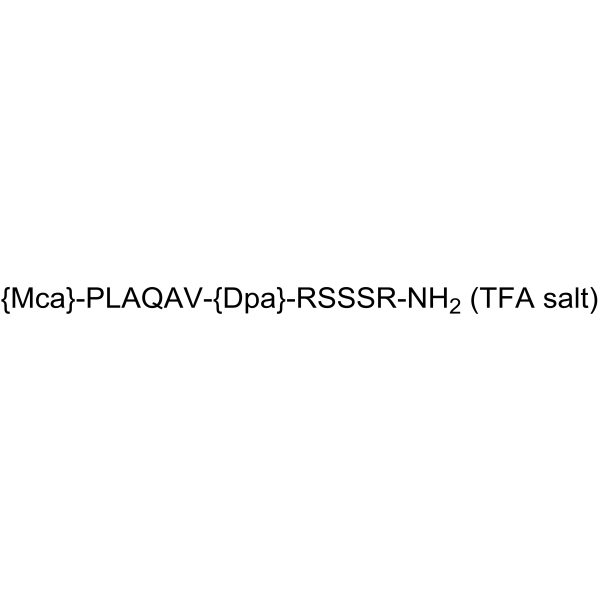
-
GP21904
MCEE Human
Methylmalonyl CoA Epimerase Human Recombinant

-
GP21905
MDH E. coli
Malate Dehydrogenase Recombinant

-
GP21907
MDH1 Chicken
Malate Dehydrogenase Chicken Recombinant

-
GP21906
MDH1 Human
Malate Dehydrogenase 1 Human Recombinant

-
GP21908
MDH2 Human
Malate Dehydrogenase 2 Human Recombinant

-
GP21909
MDH2 Mouse
Malate Dehydrogenase 2 Mouse Recombinant

-
GP21910
MDP1 Human
Magnesium-Dependent Phosphatase 1 Human Recombinant

-
GP21911
ME2 Human
Malic Enzyme 2 Human Recombinant

-
GP21912
MECR Human
Mitochondrial Trans-2-Enoyl-CoA Reductase Human Recombinant

-
GP22561
MEK1 Human
Mitogen Activated Kinase Kinase 1 Human Recombinant

-
GP21914
melA E. coli
Alpha-Galactosidase E.coli Recombinant

-
GP26192
MERTK Mouse
MERTK Mouse produced in Sf9 Baculovirus cells is a single, glycosylated polypeptide chain containing 718 amino acids (19-497 aa) and having a molecular mass of 79

-
GP21915
METAP1 Human
Methionyl Aminopeptidase 1 Human Recombinant

-
GP21916
METAP1D Human
Methionyl Aminopeptidase 1D Human Recombinant

-
GC48889
Methazolamide-d6
L584601-d6
An internal standard for the quantification of methazolamide
-
GC14046
Methyclothiazide
甲氯噻嗪
A thiazide diuretic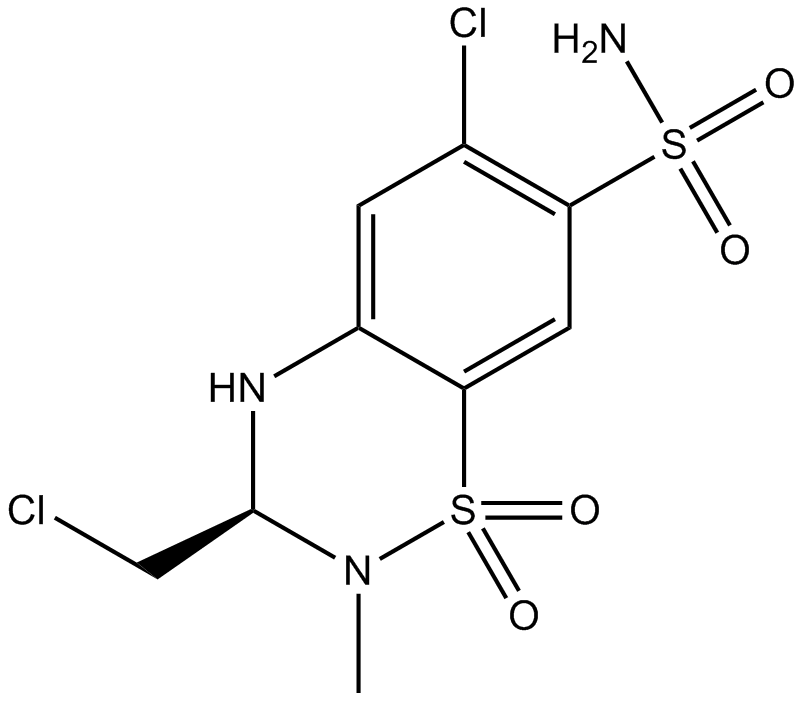
-
GC49194
Metolazone-d7
SR-720-22-d7
An internal standard for the quantification of metolazone
-
GP21917
METTL1 Human
Methyltransferase Like 1 Human Recombinant

-
GP21918
METTL21A Human
Methyltransferase Like 21A Human Recombinant

-
GP21919
MGAT2 Human
Mannoside Acetylglucosaminyltransferase 2 Human Recombinant

-
GP21920
MGAT2 Human, Sf9
Mannoside Acetylglucosaminyltransferase 2 Human Recombinant, Sf9

-
GP21921
MGLL Human
Monoglyceride Lipase Human Recombinant

-
GP21922
MGLL Human, Active
Monoglyceride Lipase Human Recombinant, Active

-
GP21923
MGMT Human
O-6-Methylguanine-DNA Methyltransferase Human Recombinant

-
GP21924
MIOX Human
Myo-Inositol Oxygenase Human Recombinant

-
GC70326
ML 400
ML 400是一种有效且选择性的LMPTP抑制剂,IC50值为1680nM。
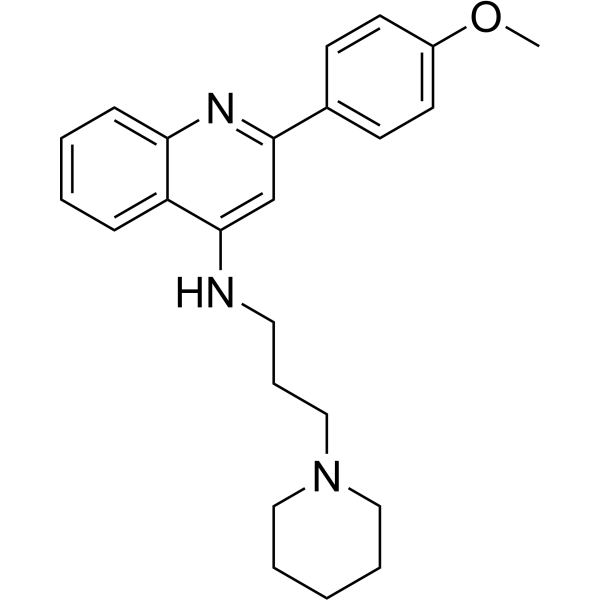
-
GC64507
ML198
ML198 is a novel activator of glucocerebrosidase (GCase) with an IC50 of 0.4 μM and does not inhibit the enzyme's action, but can facilitate its translocation to the lysosome.
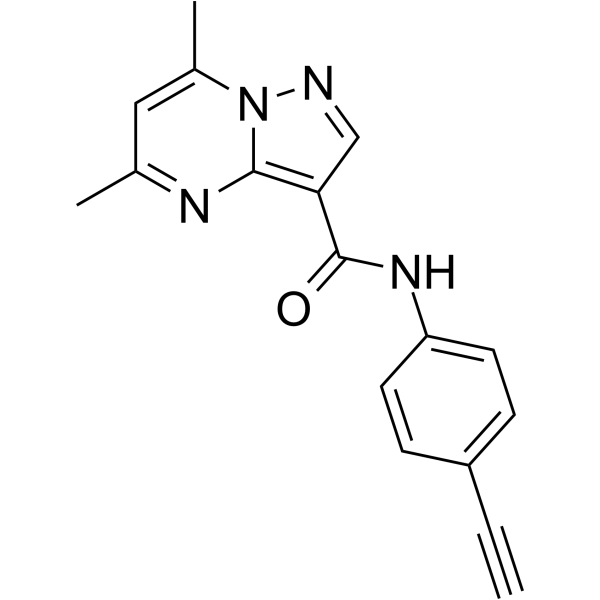
-
GC67798
MLS-0437605
MLS-0437605 是一种选择性双特异性磷酸酶 3 (DUSP3) 抑制剂,IC50 为 3.7 μM。MLS-0437605 对 DUSP3 的选择性比对 DUSP22 和其他蛋白酪氨酸磷酸酶 (PTP) 更具选择性。
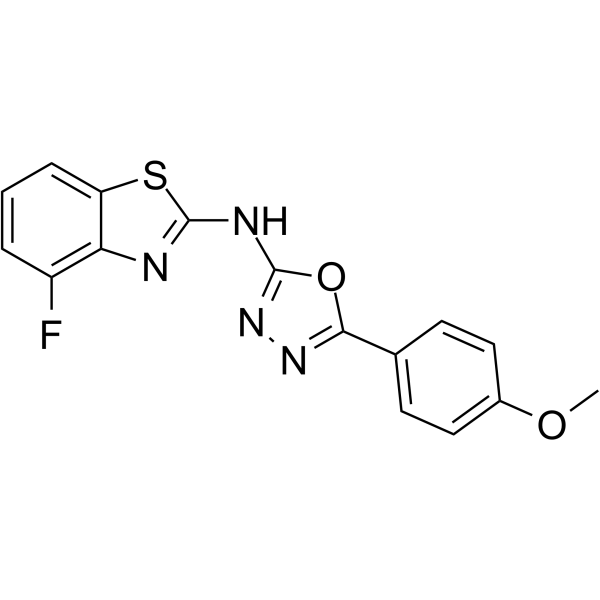
-
GC61408
MLS000544460
MLS000544460是一种高度选择性和可逆的Eya2磷酸酶抑制剂,Kd为2.0μM,IC50为4μM。MLS000544460抑制Eya2磷酸酶介导的细胞迁移,并具有抗癌活性。

-
GP21925
MMAB Human
Methylmalonic Aciduria Type B Human Recombinant

-
GP21926
MME Human
Membrane Metalloendopeptidase Human Recombinant

-
GP26166
MME Human, Active
MME Human produced in Sf9 Baculovirus cells is a single, glycosylated polypeptide chain containing 708 amino acids (52-750 aa) and having a molecular mass of 80

-
GP21927
MMLV RT
Moloney Murine Leukemia Virus Reverse Trancscriptase Recombinant

-
GP21929
MMP 1 Human
基质金属蛋白酶-1 人重组体





